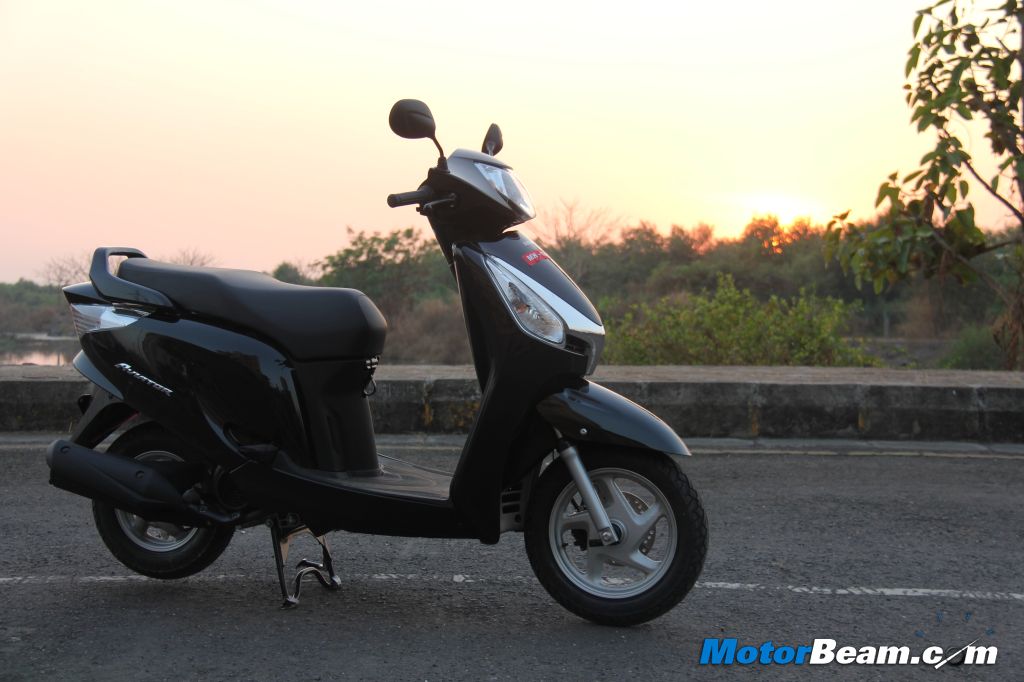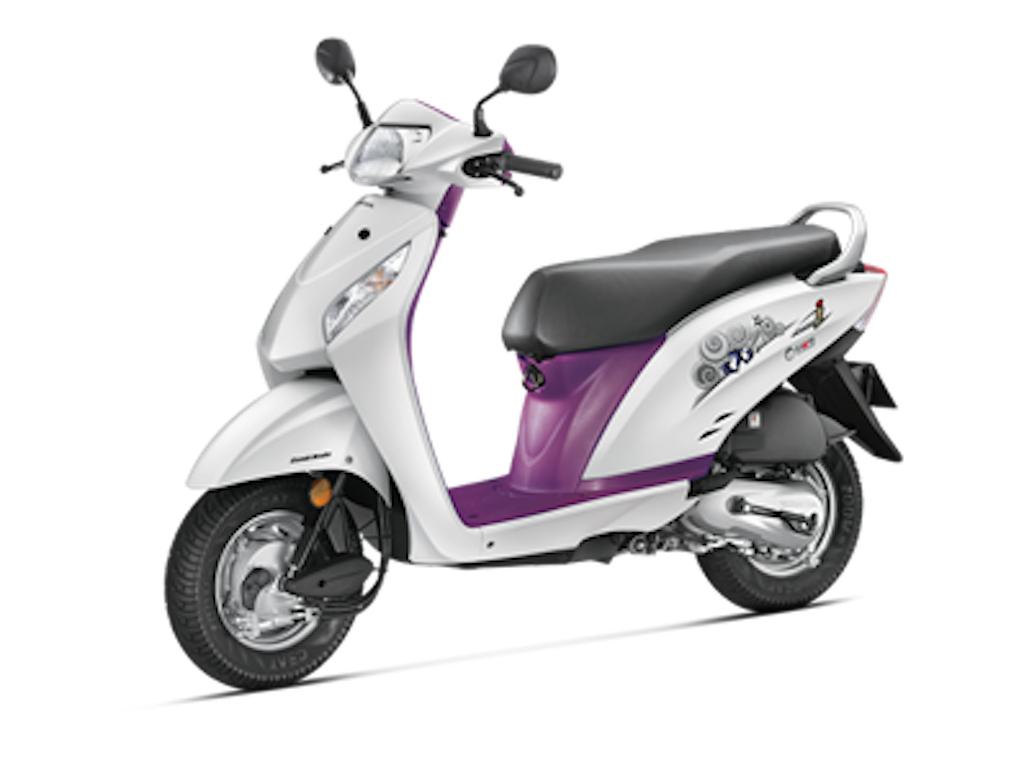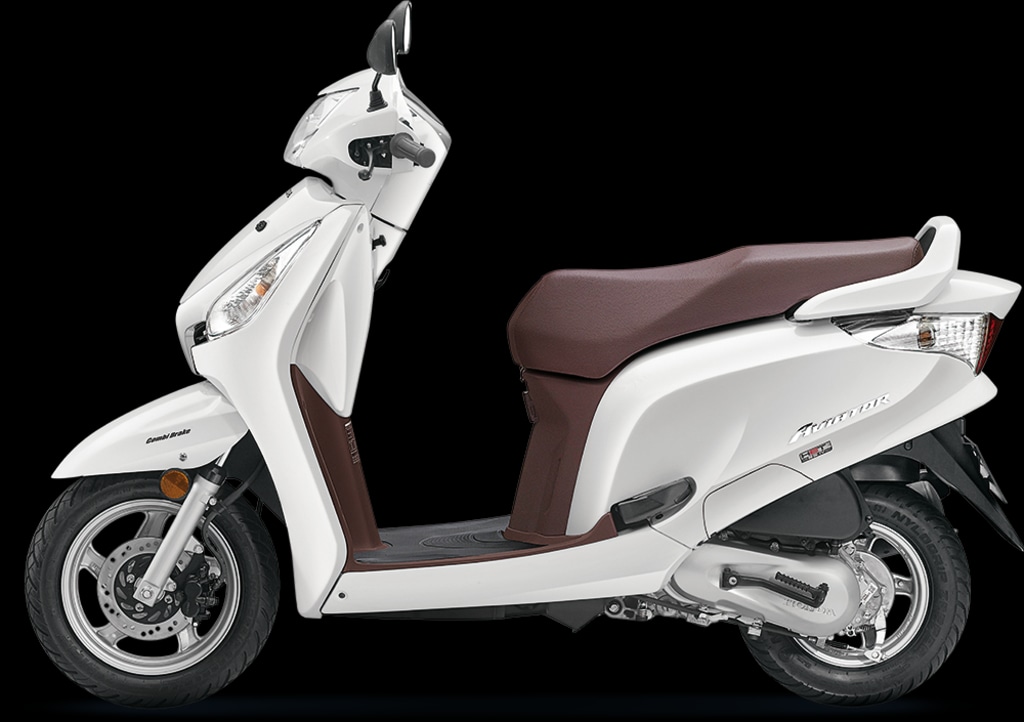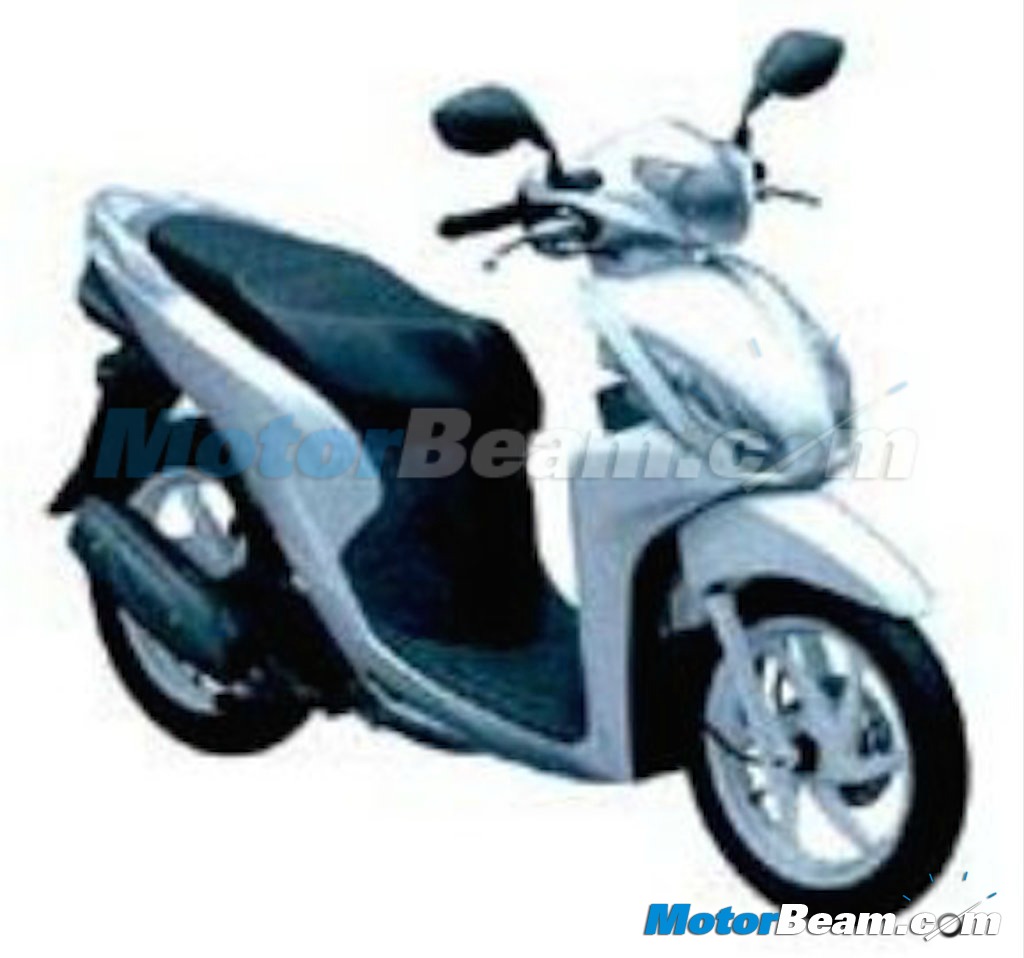
Honda Aviator Review
Bike tested: 2012 Honda Aviator DLX
Price OTR Mumbai: Rs. 62,539/-
The Aviator is the most tech laden Honda scooter in India.
Honda has ruled the scooter market in India for a long time now. The Japanese 2-wheeler major offers three scooters in the country, where the Activa is the popular choice of most. The Dio is usually picked up by the youth, who are looking at a sporty scooter. The third scooter is Honda’s flagship scooter in India, the Honda Aviator, which has never been a hot seller. While all the three scooters share many of their parts, including the engine, how different is the Honda Aviator from Honda’s other offerings?
[flickr size=”center” float=”medium”]http://www.flickr.com/photos/motorbeam/8296722514/[/flickr]
Styling – The Honda Aviator looks muscular, smart and definitely feels a notch above any other scooter in the market today which mostly carry sharp lines and sleek body panels. The Honda Aviator definitely looks a class apart with its beefed up body panels at the front which come with a huge slat of chrome. The sleek front mudguard, the body color grab handle and scooped up side panels add character to the scooter. Overall it’s a very fresh and welcome design.
[flickr size=”center” float=”medium”]http://www.flickr.com/photos/motorbeam/8295674831/[/flickr]
Instrument Cluster and Switch Gear – The angular design of the instrument cluster gels well with the overall design. Good choice of font style and size with the addition of dedicated indicator lights on each side are welcome. The console of the Honda Aviator looks even better when illuminated at night. Switch gear is borrowed from other Honda scooters and feels great, positive clicks like any other Honda scooter. Fit and finish all around is excellent too.
[flickr size=”center” float=”medium”]http://www.flickr.com/photos/motorbeam/8295671941/[/flickr]
Ergonomics – The seating position is comfortable, upright, and not wide, which makes it feel compact and confidence inspiring when riding enthusiastically. Rear view mirrors are great as usual providing great view of what is behind. The seat cushioning is mature enough for comfortable long and short journeys for the rider as well as the pillion. The grab handle is well in reach of the pillion and has soft touch plastic on the inside for better feel and size is perfect to hold on to. The foot well is slightly narrow, but it can hold the same number of bags as the Activa.
[flickr size=”center” float=”medium”]http://www.flickr.com/photos/motorbeam/8296720932/[/flickr]
Performance and Gearbox – The Honda Aviator is powered by a 109cc, 4-stroke, air-cooled engine which churns out 8 BHP of power at 8000 RPM and 8.82 Nm of torque at 5500 RPM. Engine is smooth and utterly refined. It’s even more refined than the previous generation 102cc engine which was shared with the Activa which, once again is shared with Aviator but has its share of changes. For example, peak power comes at 7500 RPM unlike the Aviator which produces same number at a higher 8000 RPM. It’s not just the engine where there are changes, the Honda Aviator weighs 108 kgs while the Activa scales in at 110 kgs, making the Aviator feel slightly sprightly.
[flickr size=”center” float=”medium”]http://www.flickr.com/photos/motorbeam/8296721980/[/flickr]
Power delivery is linear and the throttle quickly responds to inputs. Low end torque is satisfactory unlike the Activa which shifts seamlessly. The Aviator gearbox is different, it has the prominent CVT lag up to 40 km/hr after which there is tiny whoosh (this is when the CVT shifts) which takes you all the way to 85 km/hr very quickly unlike any other scooter where progress is linear. This is where the Aviator is different, it has fun quotient despite the same engine and numbers as other scooters in the family. While most people won’t find these feature exciting, we found it as a recipe for fun.
[flickr size=”center” float=”medium”]http://www.flickr.com/photos/motorbeam/8296720454/[/flickr]
Riding Dynamics – The Aviator rides on 90/90/12 wheels at the front (bigger wheels at the front to accommodate the disc brake) aided by a telescopic suspension and 90/100/10 wheels at the rear with Honda’s conventional unit spring system, which obviously is saying something. Cornering is all about front end grip, is what Honda is trying to say, has it worked? To an extent, front end is confidence inspiring and is on the stiffer side. Sudden change of direction, or entering a corner at high speeds feels a lot stable then the Activa and Dio, but at the rear despite the stiffer setup, it is not that engaging. It was a great opportunity for Honda to add 12-inch wheels at rear too. But don’t think for a moment that the ride quality is harsh, it rides well on bad roads too even, at moderate speeds. This results in more stability than other stable mates at any given speed. 190 mm disc with 3 pot caliper and 130 mm rear drum brakes provide best in class stopping power. It’s definitely the pick of the lot for the enthusiasts who are considering a Honda scooter.
[flickr size=”center” float=”medium”]http://www.flickr.com/photos/motorbeam/8295673773/[/flickr]
Miscellaneous – You can choose for drum brakes at the front which come with the option of combi brakes. No under body scraping issues were encountered on speedbreakers during our test ride. Headlight illumination is excellent. Body color grab bar is a neat touch. Under storage space is 20-litres. The Aviator keeps up with the competition on specification sheet, but still a full faced helmet won’t fit. Side stand comes as an accessory as usual and an upgraded shutter lock is also missing.
[flickr size=”center” float=”medium”]http://www.flickr.com/photos/motorbeam/8295675203/[/flickr]
Verdict – There is no doubt that the Aviator is the scooter for the enthusiast from the Honda scooter family. Despite the fact that it is priced well, has better aesthetics, goodies, wheels and suspension and has the same engine, the Aviator is a culprit of cannibalization. Thus, Honda needs to give it more changes, like bigger rear wheels and more power from the same engine or may be plonk in a 125 cc motor, which will help Honda to gain more market share from the competitive scooter which continue to grow at a rapid pace.
[flickr size=”center” float=”medium”]http://www.flickr.com/photos/motorbeam/8296721730/[/flickr]
What’s Cool
* Better Dynamics and Engine than stable mates
* Optional Disc Brakes
What’s Uncool
* 10-inch rear wheel
[flickr size=”center” float=”medium”]http://www.flickr.com/photos/motorbeam/8295672705/[/flickr]
Honda Aviator Specifications
* Engine: 109cc, 4-stroke, single-cylinder, air-cooled, OHC
* Power: 8 BHP @ 8000 RPM
* Torque: 8.82 Nm @ 5500 RPM
* Transmission: V-matic
* Top Speed: 85 km/hr
* 0-60 km/h: 11 seconds
* Fuel Consumption: 45 km/l
* Fuel Type: Petrol
* Suspension: Telescopic Forks (Front), Unit swing with spring loaded Hydraulic Damper (Rear)
* Tyres: 90/90-12 (Front), 90/100/10 (Rear)
* Brakes: 130 mm Drums (with CBS), Front Disc Brake (Optional)
Honda Aviator Dimensions
* Overall length x width x height: 1802 mm x 697 mm x 1162 mm
* Wheelbase: 1256 mm
* Seat Height: 790 mm
* Under-seat Storage Volume: 20-litres
* Fuel Tank Capacity: 6-litres
* Kerb Weight: 108 kgs




